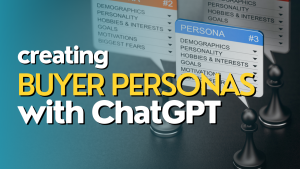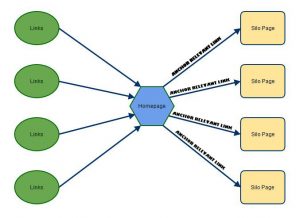Over the past 2-3 years the concept of semantic SEO has been getting a lot more attention. Probably the biggest driver of its newfound popularity is Koray Tuğberk GÜBÜR.
If you are not familiar with Koray, his YouTube videos where he explains semantic search in great detail, including reviewing relevant Google patents, are some of the most talked about in the industry.
While I would argue that semantic SEO is by no means a new topic (I think its roots go back to the concept of siloing), Koray’s way of explaining things is probably a bit different than anything else you will find out there.
The core concept behind semantic SEO is the idea of building topical authority. The way you can plan this out is by building a topical map.
So what exactly is a topical map?
A topical map is essentially a structured representation of content that revolves around a core topic or entity. It’s designed to ensure comprehensive coverage of a subject by identifying and organizing related subtopics, concepts, keywords, and content pieces.
The five main components of a topical map, emphasizing a structured approach to organizing and understanding content in relation to semantic SEO and content strategy.
- Source Context: This component addresses the background or environment from which the content originates or is being discussed. It’s about understanding the broader context—industry trends, current events, and user behavior patterns—that shapes the content’s relevance and urgency. Incorporating the source context ensures the content is timely, relevant, and resonates with the target audience’s current interests and needs.
- Central Search Intent: Central to any topical map, this focuses on identifying the primary purpose behind the target audience’s search queries related to the core topic. Understanding the central search intent—whether informational, navigational, transactional, or a combination—guides the content’s direction, ensuring it meets the audience’s needs and answers their questions effectively.
- Central Entity: The central entity is the main subject or topic around which the content is developed. It represents the core concept, product, service, or idea that the content seeks to explore, explain, or promote. Identifying the central entity helps in structuring the content to highlight its features, benefits, and relevance to the audience, ensuring the content is focused and informative.
- Core Section: This is the heart of the content, where the central entity and the central search intent converge. The core section delves deep into the main topic, offering detailed information, insights, and perspectives. It’s designed to provide comprehensive coverage of the subject, addressing the audience’s questions and interests thoroughly and authoritatively.
- Outer Section: Surrounding the core section, the outer sections explore related subtopics, ancillary themes, and additional details that supplement the main content. These sections enhance the core content by offering broader context, background information, related examples, or practical applications. They help in broadening the content’s appeal, improving its SEO potential by covering a wider range of related keywords and intents, and enriching the audience’s understanding and engagement with the topic.
So how would this look in practice?
Here is an example of what the components of a topical map could look like using the topic of project management.
1. Source Context
- Industry Trends: The evolving nature of work, including remote teams, agile methodologies, and digital transformation, impacting project management practices.
- Professional Development: Growing emphasis on certification and continuous learning for project managers (e.g., PMP, Agile, Scrum Master).
- Technological Advancements: The role of project management software and tools in enhancing collaboration, efficiency, and tracking.
2. Central Search Intent
- Informational: Individuals seeking to understand the basics of project management, including methodologies, terminology, and roles.
- Navigational: Professionals looking for resources, tools, or courses to improve their project management skills.
- Transactional: Organizations or individuals ready to purchase project management software or hire consulting services.
3. Central Entity
- Project Management: The discipline of initiating, planning, executing, controlling, and closing the work of a team to achieve specific goals and meet specific success criteria at the specified time.
4. Core Section
- Fundamentals of Project Management: Covering key concepts, phases of a project lifecycle (initiation, planning, execution, monitoring, closing), and the importance of project management.
- Project Management Methodologies: Exploring various methodologies such as Agile, Scrum, Waterfall, and Lean, including when and how to use them effectively.
5. Outer Section
- Project Management Tools and Software: Overview of popular tools (e.g., Asana, Trello, Microsoft Project) including features, benefits, and how to choose the right one.
- Role of a Project Manager: Detailing the responsibilities, skills required, and career path for project managers.
- Challenges in Project Management: Identifying common obstacles such as scope creep, time management, and stakeholder engagement, with strategies for overcoming them.
- Case Studies and Best Practices: Real-world examples of successful project management across different industries, highlighting lessons learned and tips for success.
- Certification and Professional Development: Information on project management certifications, courses, and resources for continuous learning and career advancement.
And here is another example for the topic of anxiety.
1. Source Context
- Mental Health Awareness: Growing societal acknowledgment of mental health issues, including anxiety, as significant concerns that require understanding, acceptance, and treatment.
- Impact of Global Events: The role of events like pandemics, economic downturns, and social unrest in exacerbating anxiety levels among populations.
- Technological and Lifestyle Factors: How modern lifestyle choices, social media, and constant connectivity can contribute to or amplify feelings of anxiety.
2. Central Search Intent
- Informational: Individuals looking for definitions, symptoms, causes, and types of anxiety disorders.
- Navigational: People seeking resources such as articles, support groups, or professional help related to anxiety.
- Transactional: Those ready to engage with therapeutic services, purchase self-help materials, or find tools/apps designed to manage anxiety.
3. Central Entity
- Anxiety: A broad term covering various disorders characterized by excessive fear, worry, and nervousness, significantly impacting individuals’ daily lives and well-being.
4. Core Section
- Understanding Anxiety: Detailed exploration of what anxiety is, including its common symptoms, causes, and the distinction between normal anxiety and anxiety disorders.
- Types of Anxiety Disorders: Overview of various forms of anxiety disorders such as Generalized Anxiety Disorder (GAD), Panic Disorder, Social Anxiety Disorder, etc., highlighting their specific symptoms and triggers.
5. Outer Section
- Coping Mechanisms and Self-Help: Practical advice and strategies for managing anxiety, including mindfulness, exercise, and dietary considerations.
- Professional Treatments: Insight into therapeutic options like cognitive-behavioral therapy (CBT), medication, and counseling, including how to seek professional help.
- Support and Community Resources: Information on finding support groups, online forums, and other community resources for people dealing with anxiety.
- Preventive Measures: Tips on lifestyle changes and habits that can help prevent or reduce the intensity of anxiety symptoms.
- Personal Stories and Case Studies: Sharing experiences of individuals who manage their anxiety, providing relatable insights and hope to others.



